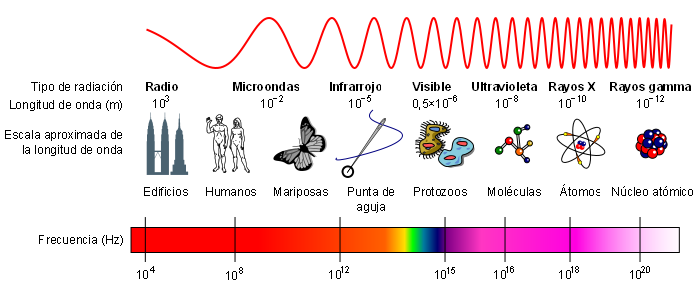The electromagnetic spectrum is called the energy distribution of the set of electromagnetic waves.
The electromagnetic spectrum extends from radiation of shorter wavelengths, such as gamma rays and X-rays, through ultraviolet light, visible light and infrared rays, to electromagnetic waves of longer wavelengths, such as radio waves. The limit for the smallest possible wavelength is believed to be the Planck length while the maximum limit would be the size of the Universe.

Example 1. Most of the light from a sodium lamp has a wavelength of 589 nm. What is the frequency of this radiation?
Using the relationship between frequency and wavelength we obtain:
\begin{equation} \nu=\frac{c}{\lambda}=\frac{2.998x10^8\ m/s}{589x10^{-9}\ m}=5.09x10{14}\ s^{ -1} \end{equation}
Example 2. An FM radio station broadcasts on a frequency of 91.5 megahertz (MHz). What is the wavelength of these radio waves, expressed in meters? \begin{equation} \lambda =\frac{c}{\nu}=\frac{2.9979x10^8\ m/s}{91.5x10^6\ s^{-1}}=3.28\ m \end{equation}



